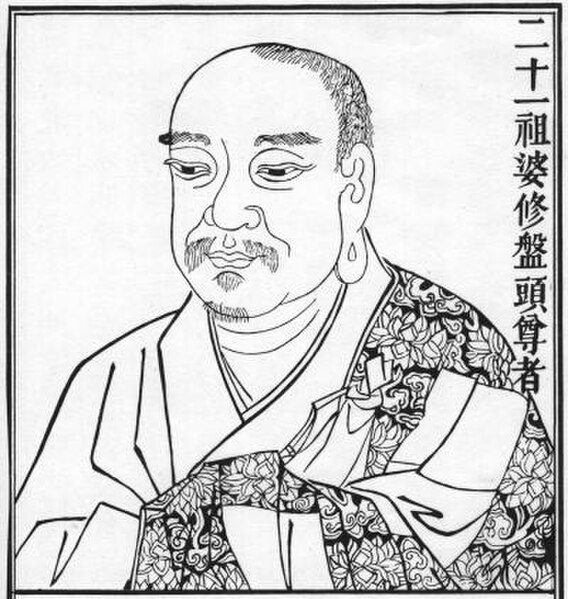Sarvāstivāda-Vaibhāṣika or simply Vaibhāṣika (वैभाषिक) is an ancient Buddhist tradition of Abhidharma, which was very influential in north India, especially Kashmir. In various texts, they referred to their tradition as Yuktavāda, and another name for them was Hetuvāda. The Vaibhāṣika school was an influential subgroup of the larger Sarvāstivāda school. They were distinguished from other Sarvāstivāda sub-schools like the Sautrāntika and the "Western Masters" of Gandhara and Bactria by their orthodox adherence to the doctrines found in the Mahāvibhāṣa, from which their name is derived. Vaibhāṣika thought significantly influenced the Buddhist philosophy of all major Mahayana Buddhist schools of thought and also influenced the later forms of Theravāda Abhidhamma.
Stupa of Jayendra Vihar at Ushkur (Huṣkapur) near Baramulla, Jammu and Kashmir, during excavations in 1869. Jayendra was known as great center of learning and Xuanzang is said to have studied Sarvāstivāda Abhidharma here.
The Abhidharma are a collection of Buddhist texts dating from the 3rd century BCE onwards, which contain detailed scholastic presentations of doctrinal material appearing in the canonical Buddhist scriptures and commentaries. It also refers to the scholastic method itself, as well as the field of knowledge that this method is said to study.
Depiction of the First Council at Rajgir, a painting at the Nava Jetavana, Shravasti.
Seated Buddha from the Sarvāstivādin monastery of Tapa Shotor, 2nd century CE
Buddhaghosa (c. 5th century), the most important Abhidhamma scholar of Theravāda, presenting three copies of the Visuddhimagga.
Vasubandhu's Abhidharmakośabhāsya is a major source in Tibetan and East Asian Buddhism.





